Nature | Releasing a sugar brake generates sweeter tomato without yield penalty
Tomatoes are the most valuable vegetable crop in the world and are liked by consumers for their unique flavor. Modern tomato breeding mainly focuses on yield and disease resistance, but flavor breeding lacks effective methods, leading to complaints from consumers that "tomatoes are losing their flavor." Tomato sugar content is a key factor affecting taste, with most consumers preferring a sweeter tomato. However, because of the strong negative correlation between fruit weight and sugar content, there is a conflict between yield and quality. Most modern commercial tomato varieties, especially large-fruited tomatoes, have relatively low sugar content. Therefore, developing delicious tomato varieties without compromising yield is a goal pursued by breeders worldwide.
Recently, a research team from the Institute of Vegetables and Flowers Agricultural and Genomics Institute at Shenzhen of the Chinese Academy of Agricultural Sciences , and Institute of Vegetables of Shandong Academy of Agricultural Sciences published a study titled "Releasing a sugar brake generates sweeter tomato without yield penalty" in the prestigious scientific journal Nature . Through genome-wide association analysis, the study identified a "brake gene" called CDPK27 and its homolog CDPK26 , which inhibits fruit sugar accumulation. Gene edited CDPK27 and CDPK26 knockouts increased sugar contents by up to 30%, without affecting fruit weight or yield penalty. These findings provide insight into the regulatory mechanisms controlling fruit sugar accumulation in tomatoes and provides a new approach to solving the dilemma of balancing quality and yield in tomato breeding.
A pair of "brake genes " that inhibits sugar accumulation in fruit
The sugars in tomato fruits primarily accumulate in the form of fructose and glucose. During fruit ripening, the products of photosynthesis in the leaves are continuously transported to the fruit in the form of sucrose, which is then converted into fructose and glucose by enzymes like sucrose synthase (SUS) and invertase, thus enabling sugar accumulation in the fruits. However, the fruit sugar content does not continuously increase throughout the ripening process, especially after breaker stage, the sugar content may slightly decrease. However, the molecular mechanisms that inhibit sugar accumulation during fruit ripening were still unclear. This study found that the temporal expression patterns of CDPK27/26 increase gradually during fruit ripening and promote the degradation of sucrose synthase (SUS3) through phosphorylation, thereby inhibiting the accumulation of glucose and fructose in the fruit. By genome-editing of CDPK27 and CDPK26 the stability of the SUS3 protein were significantly improved, increasing glucose and fructose content by up to 30%, without affecting fruit weight or yield penalty, successfully addressed the challenge of improving sugar content without affecting fruit size in tomato breeding.
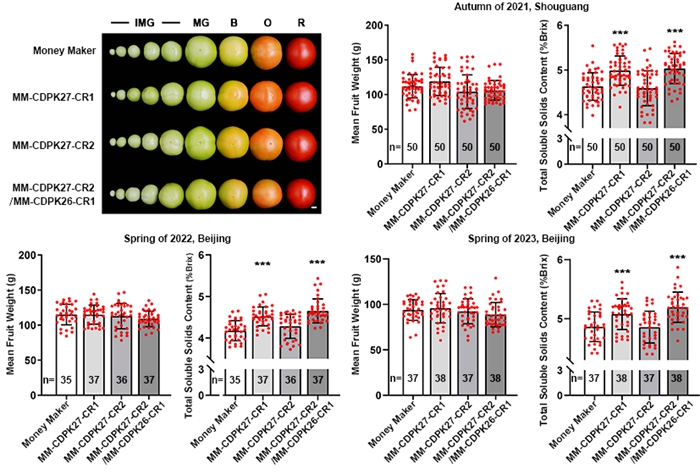
CDPK27 and CDPK26 negatively regulates sugar content
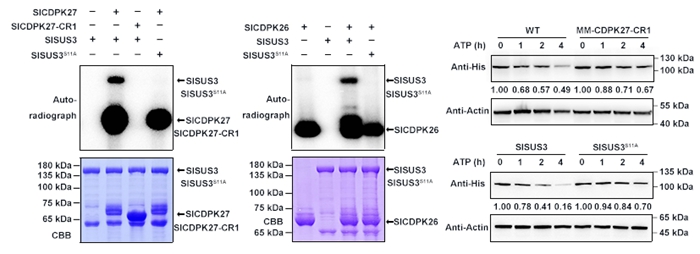
CDPK27 and CDPK26 phosphorylate SUS3 and promote its degradation
"Quantity" choices lead to reduced "quality"
Further analysis revealed that CDPK27 expression is generally low in high-sugar tomato varieties, and there is a 12-bp insertion within the promoter region which could be potentially recognized by RAV transcriptional repressors. Moreover, the 12-bp insertion was associated with small-fruit allele. During the domestication and improvement, the selection for large-fruit alleles led to a dramatic decline in the frequency of the high-sugar allele, from 58.3% in wild tomatoes to just 2.6% in modern large-fruited varieties, revealing the possible reason of the reduced flavor in modern commercial tomato varieties.
Energy "redistribution" helps improve flavor quality
The survival and reproduction of flowering plants largely depends on the production of robust seeds. During fruit ripening, tomatoes first ensure that seeds have enough energy supply. The study suggests that the inhibition of sugar accumulation by CDPK27/26 during ripening is likely to ensure normal seed development. However, seeds within a tomato fleshy-fruited variety are primed, in situ, during the later developmental stages, and seed dry weight reaches a plateau after the fruit has reached the mature green stage. The study shows that CDPK27/26 -edited plants had no significant change in photosynthetic efficiency, but seed size and number were affected, but germination rates remained normal, indicating that photosynthetic products might be redistributed between the fruit and seeds, providing an opportunity to store more energy in fruits, without affecting seed quality.
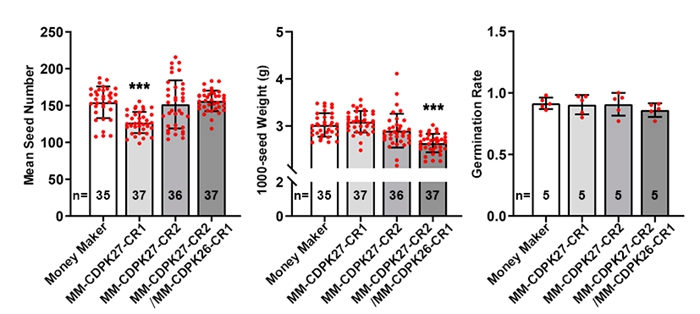
Sl CDPK mutants contain fewer, lighter seeds
Gene editing opens a new path for breeding
Genetic variation drives crop improvement, and natural variation in wild tomatoes has been widely applied in tomato breeding. However, natural mutations are relatively limited. In this study, a mutant of MM-CDPK27-CR1 with 6-bp deletion was generated through gene editing. Due to the deletion of two key amino acids required for ATP binding, CDPK27-CR1 had greatly reduced its kinase activity, and could no longer phosphorylate sucrose synthase (SUS3), and could protect the SUS3 protein from degradation by interfering with CDPK26 -mediated phosphorylation of SUS3, thus MM-CDPK27-CR1 mutants accumulating more sugar than MM-CDPK27-CR2 . Functional redundancy is common in the plant kingdom, serving as a resource for generation of new variants, potentially providing more beneficial alleles for crop improvement, but also potentially interfering with processes as dominant-negative interactors.
Rooted in the field and writing a research dream
The project started in 2017, and has aimed to solve the breeding challenge of increasing fruit sugar content without affecting the mean fruit weight. To discover and identify the brake genes that inhibit sugar accumulation, the research team planted tomato materials in various regions, including Beijing, Shandong, and Guangdong, and surveyed nearly 3,000 plants and over 20,000 fruits. Despite challenges such as typhoons, the COVID-19 pandemic, and laboratory shutdowns, the team continued to collect field data for five years. The final discovery of CDPK27/26 as the sugar accumulation brake gene was also fully affirmed by the peer reviewers.
Prof. Sanwen Huang from Agricultural Genomics Institute at Shenzhen, Chinese Academy of Agricultural Sciences is the corresponding author of the paper, and Assistant Researcher Jinzhe Zhang from Institute of Vegetables and Flowers, Chinese Academy of Agricultural Sciences, along with Assistant Researcher Hongjun Lv from Institute of Vegetables, Shandong Academy of Agricultural Sciences, and Postdoctoral Researcher Jie Chen from Agricultural Genomics Institute at Shenzhen, Chinese Academy of Agricultural Sciences, are the co-first authors. Professors Harry Klee from the University of Florida, Zhangjun Fei from Cornell University, and Prof. Yongfeng Zhou from Agricultural Genomics Institute at Shenzhen, Chinese Academy of Agricultural Sciences provided valuable guidance on this research. This work was supported by grants from the National Natural Science Foundation of China, the National Key Research and Development Program of China, the Key Research and Development Program of Guangdong Province, the US National Science Foundation and the Youth Innovation Program of the Chinese Academy of Agricultural Sciences.

Working model of CDPK27 and CDPK26
By Jinzhe ZHANG (zhangjinzhe@caas.cn)
-
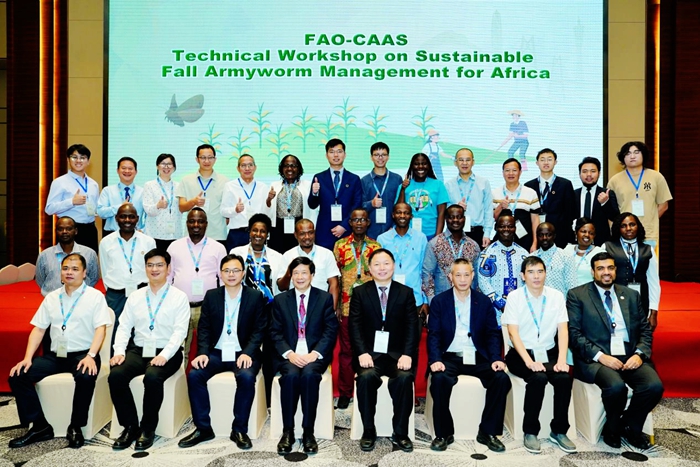 Nov 21, 2024IPPCAAS Successfully Organized the FAO-CAAS Technical Workshop on Sustainable Fall Armyworm Management for Africa in Guangdong
Nov 21, 2024IPPCAAS Successfully Organized the FAO-CAAS Technical Workshop on Sustainable Fall Armyworm Management for Africa in Guangdong -
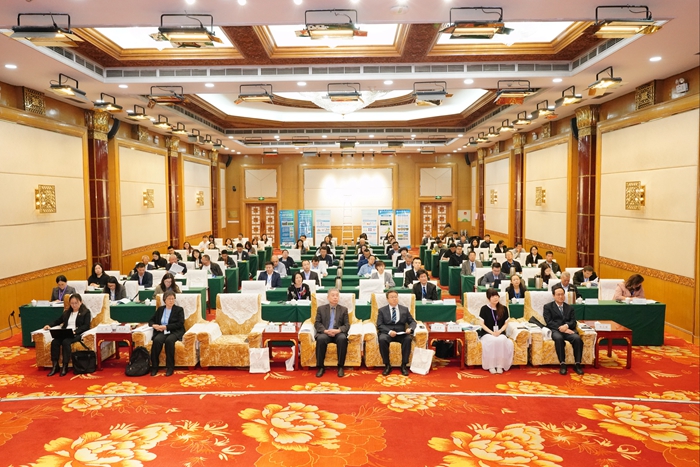 Nov 07, 2024The Policy and Technology Exchange Meeting of Deepening Environmental Cooperation on Dust and Sand Storm Control in Northeast Asia for Green and Sustainable Development co-organized by Institute of Grassland Research, CAAS successfully held in Hohhot
Nov 07, 2024The Policy and Technology Exchange Meeting of Deepening Environmental Cooperation on Dust and Sand Storm Control in Northeast Asia for Green and Sustainable Development co-organized by Institute of Grassland Research, CAAS successfully held in Hohhot -
 Nov 07, 2024IAED-CAAS delegation visits four Central-Asian countries for scientific cooperation
Nov 07, 2024IAED-CAAS delegation visits four Central-Asian countries for scientific cooperation -
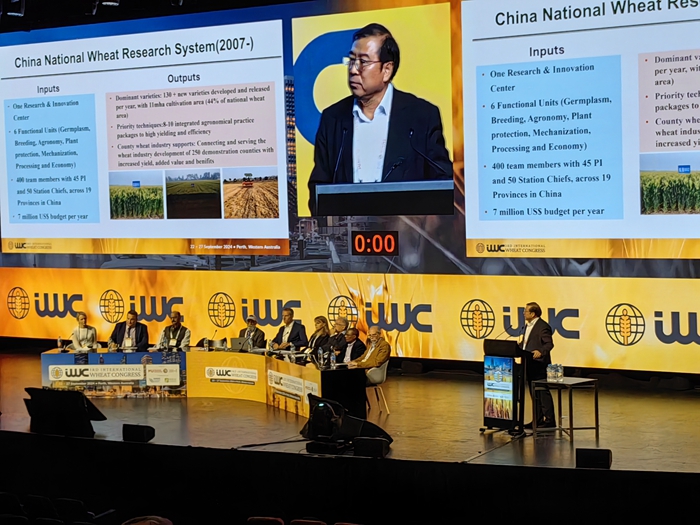 Nov 06, 2024Experts from ICS Participated in the 3rd IWC
Nov 06, 2024Experts from ICS Participated in the 3rd IWC -
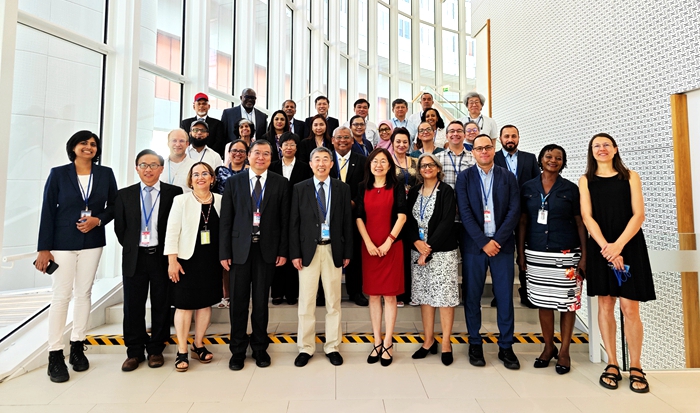 Oct 24, 2024Prof. Luxiang Liu Renewed His Term as the Chairman of the Mutation Breeding Network (MBN)
Oct 24, 2024Prof. Luxiang Liu Renewed His Term as the Chairman of the Mutation Breeding Network (MBN)
